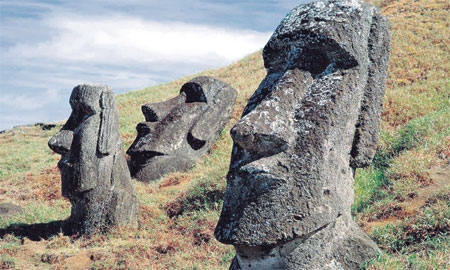Settled around A.D. 300 by Polynesians who brought with them a Stone Age culture, the island’s history embodies fascinating social and cultural phenomena that have intrigued generations of historians and tourists.
A unique, imaginative society evolved, totally free from external influences, and from the 10th to the 16th century it created shrines and erected the famous moais. Over the centuries, these stone figures evolved in style, form and size.
As well as reflecting the effect of European arrivals, Rapa Nui also shows the consequences of over-population and environmental deterioration. Today, the population is around 2,000 people, about one third of whom are from Chile and the remainder being descendants of the original Polynesian settlers.

0 COMMENTS